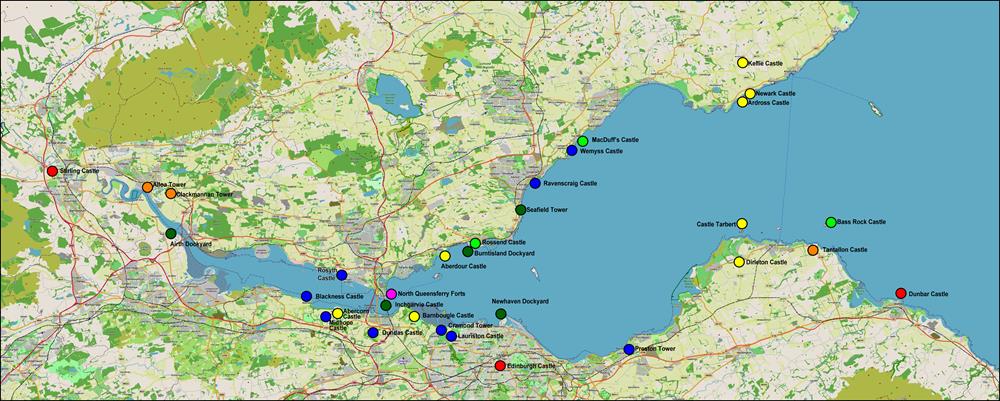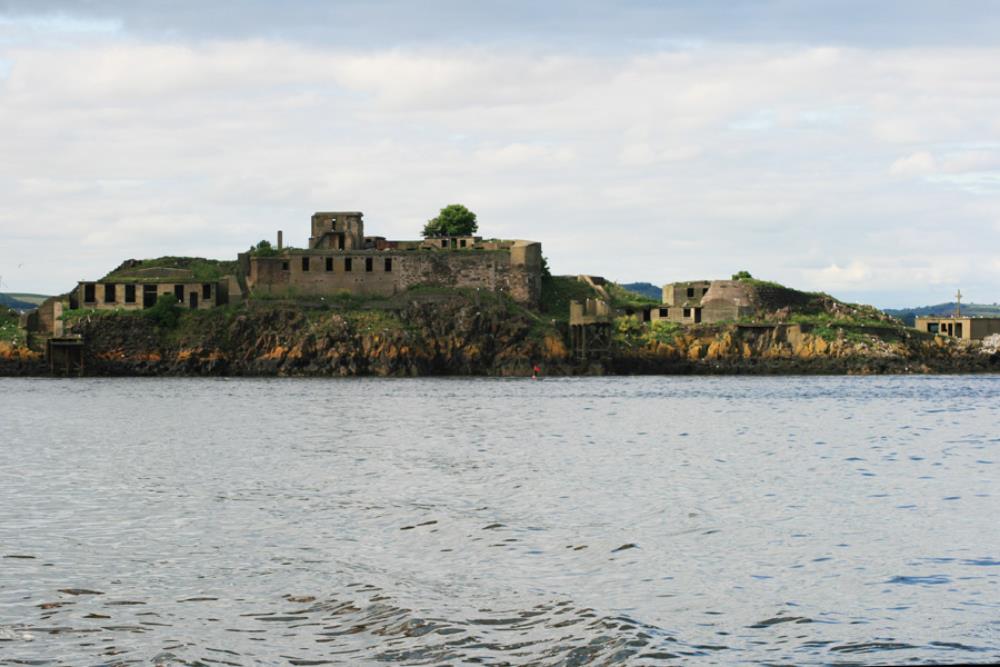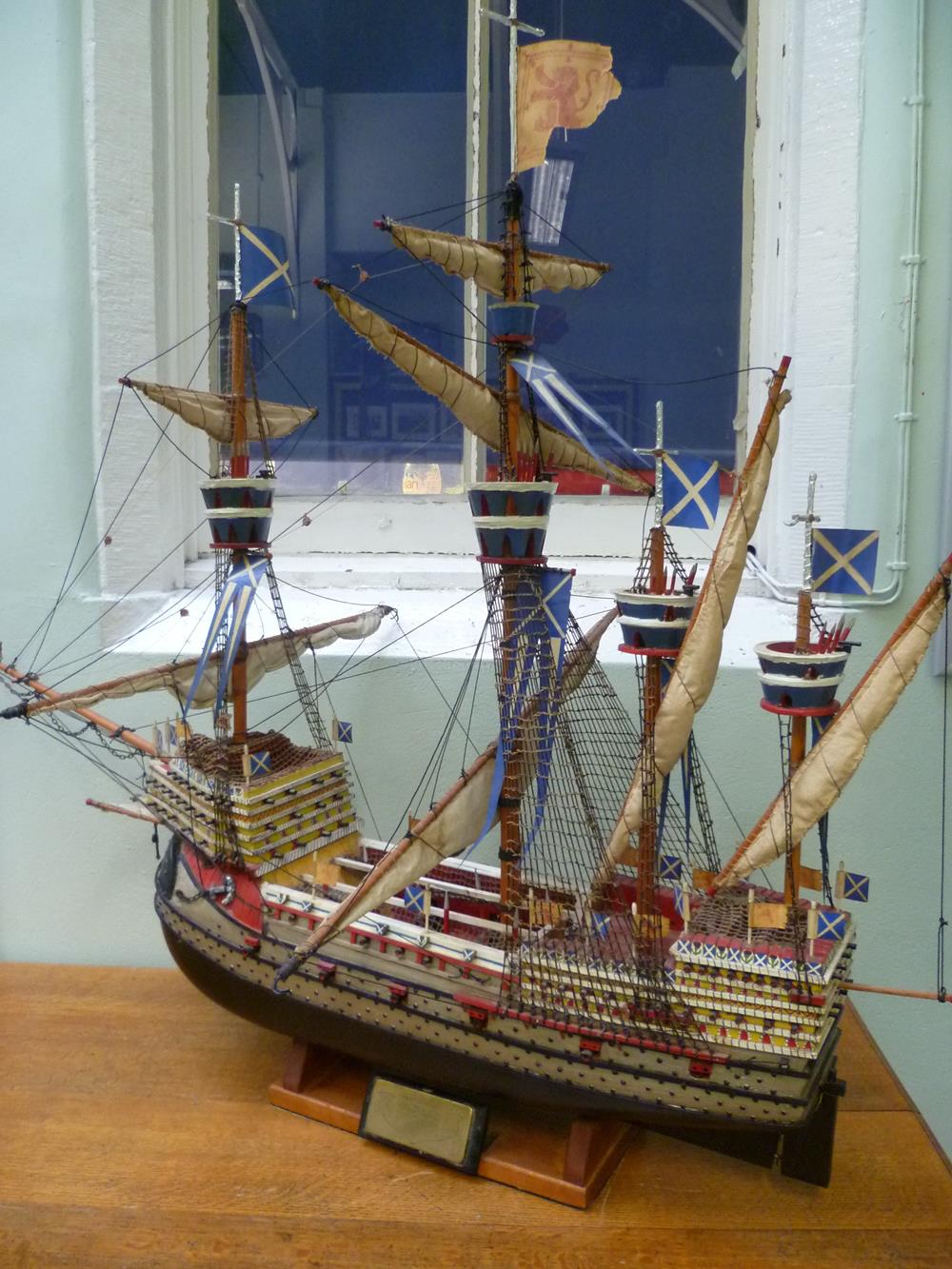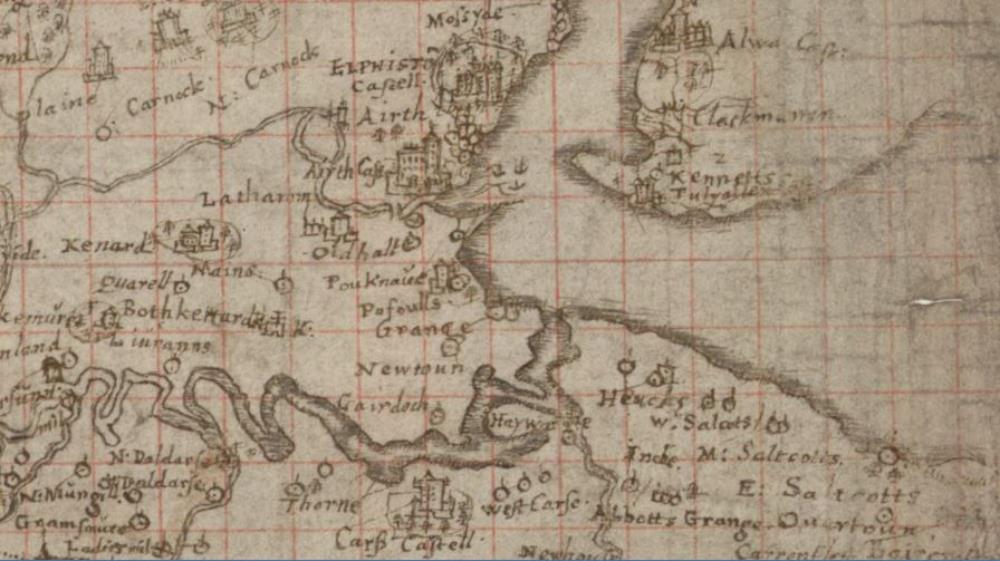Ancient Forth Defences 10 – King James IV and the beginning of national defences 1488 – 1510
| < 9 – The House of Stewart 1370 – 1488 | Δ Index | 11 – Disaster at Flodden 1509 – 1542 > |
In 1488 when James III died his son was crowned King James IV of Scotland. James IV was a true Renaissance man with an interest in practical and scientific matters. He turned Edinburgh Castle into one of Scotland’s foremost gun foundries, built the Great Halls at Edinburgh Castle and Stirling Castle, and a part of Falkland Palace.

In 1491 he gave John Dundas permission to build Inchgarvie Castle.
 Inchgarvie Fortifications built on top of Inchgarvie Castle
Inchgarvie Fortifications built on top of Inchgarvie Castle
James IV also created the Royal Scots Navy to give Scotland a strong maritime presence; founding two new dockyards and acquiring a total of 38 ships.
In 1505 James IV built his first Royal Dockyard at Newhaven, because the existing docks at Leith could not accommodate the size of ships he wanted for his navy. The Margaret (named after his Queen, Margaret Tudor) was comparable to the Mary Rose, while the famous Great Michael was the largest and most powerful ship in the world when she was launched in 1511.
 A Model of The Michael in Newhaven Primary School
A Model of The Michael in Newhaven Primary School
Then in 1510, he added a second Royal Dockyard, upstream at Pool of Airth, where the ships could be fitted at a more defensible site. (The Forth in this area now bears little resemblance to the medieval river-scape in which the docks were located. Wholesale drainage of the ‘moss’ or raised bogs upstream from the 1700s onwards led to millions of tonnes of sediment being washed into the Forth dramatically altering the river and the valley.)
 Airth on Timothy Pont’s Map of Scotland c1590. This is the only place on the Forth that he drew boats.
Airth on Timothy Pont’s Map of Scotland c1590. This is the only place on the Forth that he drew boats.
Back in 1443, James I had granted the estate of Seafield to Robert Multrare. He built Seafield Tower on the estate in the early 1500’s.
 Seafield Tower
Seafield Tower
| < 9 – The House of Stewart 1370 – 1488 | Δ Index | 11 – Disaster at Flodden 1509 – 1542 > |